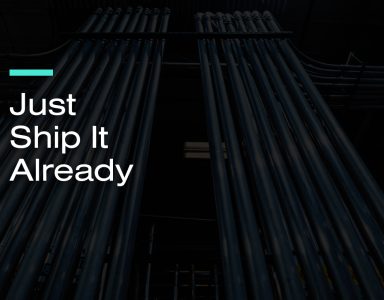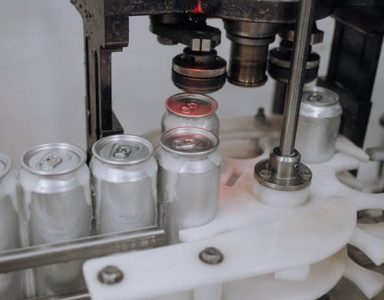David vs. Goliath: The beginning
“Jordan, exciting news!!” says the COO.
He explained to me that the software he mentioned earlier as covered in Part 2 was being brought on board and I would be a key player on the implementation team. I was fairly confused at this point since two hours earlier it was just something he wanted me to take a look at, not implement. I asked him about DemandCaster and what would happen with it. He explained that we would use it until we fully implemented the new software. When I asked him what was wrong with DemandCaster, he simply said that forecasting was an issue and this new software would fix it. He then proceeded to walk out of my office before I could say another word.
A lot things were happening behind the scenes during this time and some became apparent quite quickly:
- The private equity firm (essentially the management team), had been speaking with the owners of the new software and were interested in investing in the company. The software company needed a gateway to one of our largest customers (one of the largest home improvement retailers in the world). While it was only rumored, it seemed as though the private equity firm would be able to secure a deal with the software company if they could help it secure a deal with the retailer we had a relationship with.
- While no contracts had been signed yet, the private equity group had already decided they would be implementing the software. This was a surprise to everyone including the CIO who had no idea that it was coming.
- The “Big Meeting” as referenced in Part 2 was the opportunity to bring up the new software and try and make it sound like the solution to all the problems. The disparity between the new forecast being presented during the meeting versus the business plan was an easy way to blame the statistical forecast being generated.
First, a quick snapshot of the new software or software number 3:
- It was expensive. It was roughly $250K to purchase as well as $15K monthly subscription fee.
- After implementation any user support request was charged a minimum of $1K/hour.
- The software was even less flexible than software number 1 (See Part 1) and the implementation time was expected to be 9 months.
- Most importantly, it was originally designed to manage grocery store demand and supply for staple items such as bread, eggs, canned goods, and other staples not electronics.
The compelling feature of software 3, which is what drew the new management team, was the promise of immediate reaction time from the retail shelf all the way through the supply chain. This meant you needed all your vendors and customers to be on the platform so that every node in the supply chain could be synced up. The starting point in the chain would be point of sale (POS) and inventory data at the customer which would then be forecasted on a daily basis and drive that forecast and replenishment orders back through each node.
In principle, this makes absolute sense! Being able to see what is going on at the customer from a sales and inventory standpoint eliminates a lot of guessing and has the potential to drive down inventory across the entire supply chain! However, in reality, there are a number of potential failure points that undermined the promise of the new software at our company that I will describe below.
- The forecast that was being requested daily was susceptible to demand spikes that would cause the forecast and in turn the inventory requirements to vary wildly. With long lead times, slight changes in the forecast could cause sudden theoretical inventory shortages that needed to be weeded out. These spikes were at times caused by the retailers initiating promotions that were not being communicated back to us.
- For the system to work properly, the buyers at the retailer needed to re-order based on the information being supplied from the POS data. This was not the case. The buyers had their own plans that were not tied to the data and since we did not have control over the inventory and replenishment decisions, the forecast and shortage information just became a source of information for discussion. The risk in producing more inventory to meet a potential stock shortage solely based on the POS forecast was heightened if the retail buyer made the decision to not re-order or order a different quantity.
- Technology based products that are relatively new to the market are some of the hardest to forecast. Market perception, price, point of purchase location, and other factors can cause demand to vary wildly. POS data can show what is working and not working but it should be used as an indicator to help make better sales and inventory decisions in concert with the retailer via the S&OP process. Using the data in a vacuum to make purchasing and production decisions is not smart. Considering software number 3 was originally designed to manage grocery items such as bread and other staple products further reinforced this gap.
In addition to the above reality, we experienced other problems with the software such as it being visually number heavy with minimal visual charts and an inability to view common time bound metrics. Since it was designed for grocery based goods with long life cycles, the assumptions around demand and supply were hard coded. This was a significant shortcoming for an electronics based company such as ours where demand and supply were highly dynamic and product life cycles were short. A change in parameters required major changes to the software code which meant the expenditure of more money.
After six months of trying to get the software to work, concerns began to mount as our company was spending a lot of money with no return. The company’s board of directors had enough and commenced another management change.
David vs. Goliath: The final battle
Throughout the time Software 3 was being implemented, DemandCaster had still been running. Even though the DemandCaster team knew of the timeline planned for being replaced, they continued to provide us with excellent support, without realizing that their continued support was about to pay off.
It took less than a week for the new executive team to call me in to discuss software. I provided them my original evaluation of software 3 as compared to DemandCaster and why it didn’t make much sense to use software 3. A summary of my evaluation is provided below:
[table id=1 /]After my presentation, the executive team decided to compare the softwares head to head for 90 days. DemandCaster, known as the little guy, “David”, would take on software 3, the “expensive” solution, “Goliath”. The software that could show an overall better forecast accuracy and optimal inventory management would stay with our company.
It only took a few weeks for DemandCaster to shine and clearly show its dominance. While the forecasting accuracy between the two solutions was comparable, it was on the inventory side that DemandCaster separated itself. As explained earlier, Software 3 hardcoded most assumptions including safety stock levels (which were actually calculated by DemandCaster and fed to Software 3). Anytime a decision was made to change the supply parameters, it took only a few seconds to change in DemandCaster as compared to a few days to weeks to reprogram in Software 3. This caused Software 3 to over drive supply when not needed.
Less than 90 days from the start of the competition and over a million dollars difference in inventory, the new CEO called me into his office and told me he would be canceling software 3 and to please inform Ara that we will continue with DemandCaster going forward. “David” had won.
After all was said done, I learned from this entire experience. Here are a few of my major takeaways:
- Software is always a smart choice, but needs to be complemented with people and process!
- Forecasting accuracy among different software solutions are pretty comparable since the same statistical methods are used in most packages. Having the ability to manage the supply side with the change in inventory management parameters is just as important as having a good forecast.
- In most companies, item level forecasts tend not to be reliable for 80% of items.
- S&OP is all about people and process, as referenced earlier. It will never work without executive support!
- The “expensive” solution is not always the best solution. Keep an open mind when evaluating software. The advent of cloud computing has turned the price / value proposition on its head.
- Consider software flexibility, user-friendliness, support, and training when evaluating software. Support and training can be just as, if not more, important than software features.
I hope you enjoyed this series and were able to come away with some good information. Recently after spending a good amount of time working with Ara and the DemandCaster team, I decided to join their team as I am confident in DemandCaster’s potential. Their unique proposition of providing ongoing improvements based on customer feedback, flexibility, and support at a fair price is unique in the industry.


